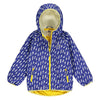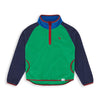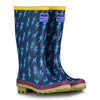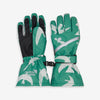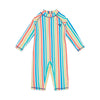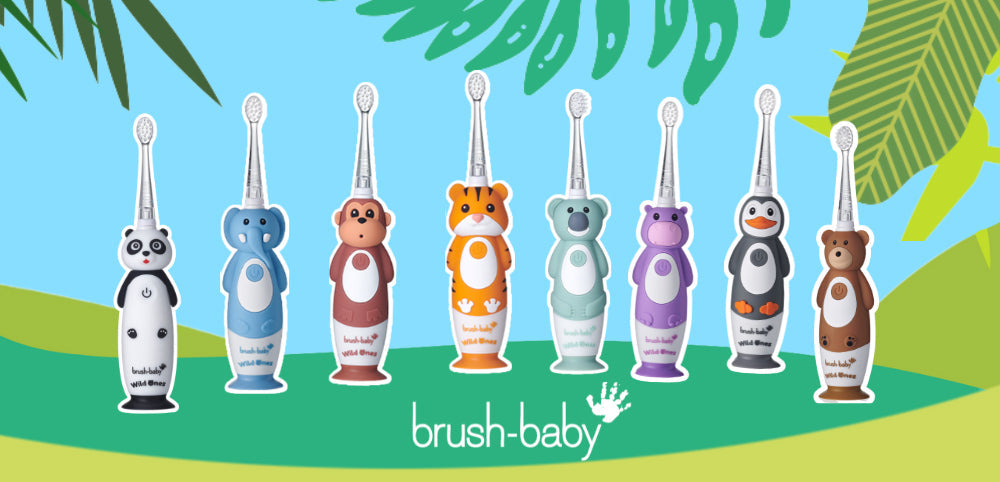
Top Tips For Tooth Brushing With Brush Baby
Admittedly cold nights and dark mornings aren’t the most conducive to toothbrushing when a warm bed is so inviting both at the beginning and end of the day.
However, this is why a toothbrushing routine, come rain or shine, dark or light, is important.
Our friends at Brush Baby are experts in gum and toothcare products for children. They've put together a helpful guide to encouraging little ones to brush their teeth.

Why make toothbrushing fun?
Encouraging good dental habits early on is super important. It's not just about clean teeth, it's about creating good habits that can prevent cavities and promote overall health.
We’ve been helping parents make toothbrushing time more fun with a range of toothbrushes and toothpastes specially designed and formulated for children from newborn to 10 years. However, even with fab products sometimes children still need a little bit of encouragement to get the task done.

Here's 6 top tips to help make toothbrushing just a little bit easier:
1) The right children's toothbrush
Choosing a suitable toothbrush can make a real difference in your little one’s brushing experience.
Invest in a quality kid’s toothbrush that suits your child's age and needs. When kids feel involved in their dental care choices, it helps them to develop a positive attitude toward brushing their teeth.
Letting your child pick their own children’s toothbrush can spark excitement about brushing. Brush-Baby offers a range of toothbrushes, from baby's first toothbrush to kids’ electric toothbrushes.
2) Choose their own kid’s toothpaste flavour
Similar to toothbrushes, letting your little one select their choice of kid’s toothpaste adds an element of fun to oral care.
Always look for an age-appropriate kid’s toothpaste for your little one. Look for options with fun flavours and the right level of fluoride to protect against cavities.
Our range of kids’ toothpaste flavours caters to various tastes, ensuring that brushing is a tasty sensory experience. From fruity to minty flavours, the gentle formulas appeal to young taste buds while protecting their precious teeth.
And finally… remember the right amount of toothpaste on the toothbrush head! 0-3 years – the size of a rice grain and over 3 years – the size of a pea is sufficient.
3) Engage their imagination
Engaging their imagination helps to capture their attention and makes the whole toothbrushing experience enjoyable.
Transform toothbrushing time into an imaginative adventure - you could do this by encouraging your little one to pretend they’re brushing a superhero’s teeth or battling cavity monsters with their children’s toothbrush or using characters from their favourite cartoons/tv programmes or films.
Perhaps you could invent a toothbrushing game, where they have to or ‘paint’ their teeth with the kid’s toothpaste or maybe ‘brush away’ imaginary monsters, our patented deep clean flossing bristles can get into the nooks and crannies where food debris, bacteria and plaque can lurk!
Storytelling can really transform brushing into an activity they look forward to rather than a boring and routine task, nurturing a love for dental care that lasts a lifetime.
Or why not do a dance-along?
Turn brushing time into a mini dance party. Little wigglers love this!
Play your little one’s favourite song and dance along while they brush their teeth. Most songs last about two minutes - which is the perfect amount of time for brushing!
4) Counting
Remarkable, isn’t it? Children can pfaff for 2 minutes, but when they’re supposed to be brushing their teeth for 2 minutes it always seems to be cut short!
2 minutes is the optimum time for a toothbrushing routine as it ensures that every tooth is covered and adequately brushed.
Why not use the 2 minutes as a counting game?
Dividing the mouth into quarters and doing 30 seconds on each section of the mouth. You could use a clock with a second hand /stopwatch or egg timer to watch the time go by.
Or older children could use it as an opportunity to practice counting 0-30 seconds to make it easier or 0-240 seconds for the correct length of toothbrushing time in seconds.
(p.s. our electric toothbrushes have integral 2 minute timers to make the job easier!)
5) Reward
A toothbrushing chart is a visual tracker to helps kids monitor their toothbrushing sessions. It can be as simple as a hand-drawn grid with ‘days of the week and ‘morning and night’ and using ‘tick’ marks or by using stickers to reward activity and teaching positive dental habits from the start.
Choose a chart that matches your child’s interests to make the experience, fun and engaging.
Make using the chart part of your daily routine by putting it in a visible spot, such as the bathroom, bedroom or kitchen ‘fridge door. Explain the importance of brushing twice daily with their children’s toothbrush and set achievable goals, rewarding each brushing session with a sticker/or a ‘tick’.
6) Follow up with fun!
To increase maintain their motivation, you could use a rewards system where reaching milestones on the chart earns them prizes such as bedtime story or by giving them a fun animal fact (see below for some free interesting animal facts!) ensuring that toothbrushing is fun and rewarding.
This positive association can make teeth brushing something for them to look forward to rather than feeling like it is a chore and hopefully make it easier for you!

At brush-baby, we believe in creating moments that matter with your little ones. If you loved these ideas, check out our website for more parenting tips and product recommendations to keep your child's smile bright and healthy.
Our WildOnes range of animal-themed character toothbrushes are really popular during toothbrushing time.

Fun animal toothy fun facts:
1) Elephants go through six sets of teeth in their lifetime. Each new set is larger than the previous set.
An elephant’s tusks are their teeth and usually appear when an elephant is around 2 years old. Tusks continue to grow throughout an elephant’s life and despite their hard external appearance, tusks are sensitive as they have a narrow nerve canal running down to the tip.
2) Bears have a 'sweet tooth'.
Bears teeth are similar to human teeth. And like humans, bears can get tooth decay, tooth fractures, gum disease and cavities. A 3.5-million-year-old bear fossil found in Canada showed evidence of tooth decay, likely to be caused by eating lots of sweet berries!

3) Koala means 'no drink' or 'no water'.
In fact the majority of a koala’s water intake comes from fresh eucalyptus leaves (up to a kilogram a day) which are poisonous to many other animals. As a ‘diprotodont’ which means that they have less than three incisor teeth on each side of their jaw and because of their leaf-based diet which they get very little energy from, a koala may sleep or rest for up to 18-20 hours every day while being tucked into the fork of the tree.
4) Similar to humans - monkeys are good at copying actions.
Monkeys mimic toothbrushing actions when shown what to do. It’s called operant brushing and is important as dental care is essential for maintaining oral health in monkeys. Apart from having a similar number and type of teeth to humans (32-26 permanent teeth, their teeth have evolved to consume over 500 different types of food. Teeth are used by monkeys to show their dominance and indicate their role in the social hierarchy.

5) Hippos have the largest teeth of any land animal.
Their incisors can grow up to 40 cm (1.3 ft) long and continue to grow throughout their lives to keep sharp. and male hippos have slightly larger teeth than females. Working in conjunction with each other incisors and canines sharpen each other while grazing. Hippos work with fish to keep their teeth clean. The fish eat food stuck to the hippos' teeth, allowing the hippos to reach vegetation that would otherwise be out of reach.
6) Missing teeth can indicate a man-eating tiger!
Tigers have the longest canine teeth of any big cat and can be up to 3 inches long and which can exert up to 450kg (1000 pounds) of pressure when they bite and have nerves that help them locate their prey's neck, but their lower jaw can only move up and down and not side to side.

7) Pandas' tooth enamel repairs itself.
Researchers are investigating the properties of pandas’ teeth as their enamel regenerates to fix cracks and damage. Their teeth need to be strong because of all the bamboo that they eat! Pandas are in the top league of strongest bites in the animal kingdom. The chubby cheeks that make them look so endearing, are very strong as their cheek muscles and jaws crack through bamboo stems and have a tough lining so that the bamboo splinters don’t hurt too much.
8) Penguins don't have teeth!
But the inside of a penguin's mouth—and its tongue—are armed with backward-pointing spikes that clamp onto slippery, wriggling prey and prevent its escape. Even if they had teeth, they couldn’t use the excuse that their toothpaste is frozen as toothpaste cannot freeze! It contains an ingredient that prevents it from hardening when exposed to air. Actually, it’s water content in toothpaste which helps it keep it flexible and coming out of the tube.

p.s. Spare a thought for the snail - it has about 14,000 teeth!
How lucky are humans to have just 32 permanent teeth? The snail would never leave the bathroom as it would have to undertake 437 x 2-minute toothbrushing sessions and that’s just in the morning! No wonder they are so slow!



